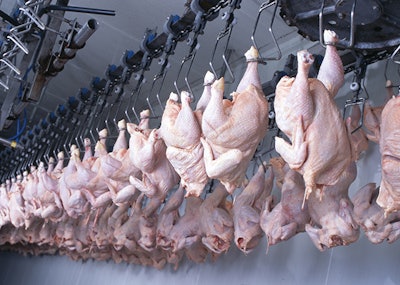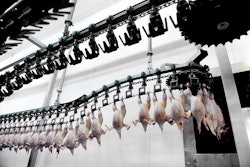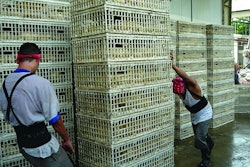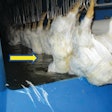
A four-year, $5 million project will seek to advance food safety and reduce waste in robotics and automation for poultry processing.
Poultry processing has been moving toward automation for several years, particularly as a solution for labor shortages in the industry. During COVID-19, that interest intensified.
“Right now, workers are standing shoulder to shoulder” in cold, refrigerated poultry processing environments, explained project director Jeyam Subbiah, a professor and head of the food science department for the Division of Agriculture and the Dale Bumpers College of Agricultural, Food and Life Sciences at the University of Arkansas.
“The pandemic demonstrated how fragile the supply chain is when people are standing so close to each other.”
The project includes researchers from the University of Arkansas, the Georgia Institute of Technology, the University of Nebraska-Lincoln, Fort Valley State University and the U.S. Department of Agriculture (USDA) Agricultural Research Service.
Reducing waste during deboning
One of the major goals of the project will be finding ways to reduce waste during the deboning process. While robots are very good at repetitive tasks, they still lack the precision of humans when it comes to deboning a carcass.
“Leaving even an extra nickel of meat on the frame adds up significantly,” said Subbiah. “Right now, it’s not economical for the poultry industry. But at the same time, they have a hard time finding the laborers to do all the work.”
The project will focus on artificial intelligence and virtual reality to improve a robot’s precision. In addition, research on the physiology of the birds will hopefully identify how a bird’s external dimensions correlate to bone placement, which could help automation create more individualized cuts and reduce the amount of wasted product.
Automating food safety practices
The ability to automate food safety practices in the processing plant is a lesser-known potential benefit of the technology.
“We have rapid biosensors that can screen how much bioorganic material is left over,” he said, noting that this helps provide guidance that improves the cleaning and disinfection process.
Robots can also collect samples from drains, testing for the presence of Salmonella and other pathogens.
Virtual reality to solve labor issues
Virtual reality offers poultry processing plants more flexibility, Subbiah said.
Most poultry processing plants are currently located close to large cities because that’s where the workers are. However, if workers can use virtual reality to control poultry processing remotely, there are far more possibilities.
The human worker wears virtual reality goggles that use sensors to create a real time image of the processing line, giving them the ability to control a robot in real time to load machines and manipulate product.
Virtual reality could even transform poultry processing employees into gig employees.
“Instead of working all the time, I can work 30 minutes or an hour – whatever I want to do,” he explained. “That’s what people love about Uber, right? Hopefully, if we can do the same thing, then poultry companies will not have a labor shortage.”

















